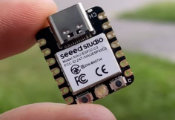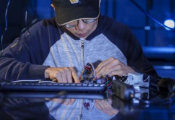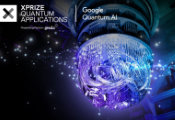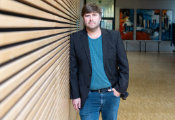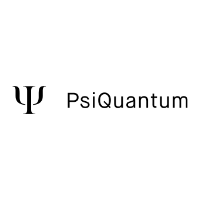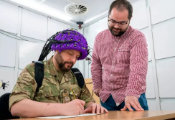USC Researchers Develop First-Ever Quantum Filter to Isolate Entangled States With High Precision
March 28, 2025 -- In a groundbreaking advance that could accelerate the development of quantum technologies, researchers at the USC Viterbi Ming Hsieh Department of Electrical and Computer Engineering and School of Advanced Computing have demonstrated the first optical filter capable of isolating and preserving quantum entanglement—a mysterious but powerful phenomenon at the heart of quantum computing, communication, and sensing. This work, published in Science, opens the door to compact, high-performance entanglement systems that can be integrated into quantum photonic circuits, enabling more reliable quantum computing architectures and communication networks.

The study, “Selective Filtering of Photonic Quantum Entanglement via Anti–Parity-Time Symmetry,” was led by professors Mercedeh Khajavikhan and Demetri Christodoulides, with first author and USC graduate student, Mahmoud A. Selim.
Quantum entanglement is a process in which two or more particles become connected, such that the behavior of one instantly influences the behavior of the other—even when they are far apart. This invisible thread is what allows quantum computers to perform massive parallel calculations, quantum networks to transmit information securely, and sensors to achieve levels of sensitivity far beyond classical systems. Entanglement lies at the heart of quantum physics—a mysterious tether that binds particles together, creating an uncanny connection that defies classical intuition. Once dismissed as a “spooky action at a distance,” entanglement is now recognized as a vital resource—powering quantum technologies.
But entanglement is fragile. Even tiny amounts of noise or errors can destroy these delicate quantum links, making it difficult to harness entanglement in real-world systems.
To overcome this, the USC-led team created a novel kind of optical filter—an arrangement of laser-written glass light channels called waveguides that act like sculptors chiseling away everything unnecessary to reveal a pure, entangled state beneath. Regardless of how degraded or mixed the incoming light is, the device strips away the unwanted components and leaves behind only the essential quantum correlations.
“This filter doesn’t just preserve entanglement—it distills it from a noisy mixed quantum state,” said Selim. “It leaves the quantum core intact while shedding everything else.”
The breakthrough at the heart of this work comes from a surprising idea in theoretical physics called anti–parity-time (APT) symmetry—a concept that has only recently begun to attract attention in the world of optics. Most traditional optical systems are designed to avoid loss and maintain symmetry, meaning that light flows in predictable, balanced ways. But APT-symmetric systems take a very different approach: they embrace loss—not randomly, but in a precise and carefully controlled manner. By combining this engineered dissipation with the power of interference, these systems offer a unique and counterintuitive way to steer how light behaves. This unconventional control opens up exciting possibilities for manipulating light in ways that were previously thought to be impossible.
By embedding this symmetry into a specially designed network of optical waveguides, the team created a structure that naturally filters out noise and guides the system toward a stable entangled state—much like a ball rolling into the lowest point of a valley.
“This work shows that non-Hermitian physics and open quantum systems—once considered a mathematical curiosity—can offer powerful tools in the quantum regime,” said senior author Mercedeh Khajavikhan, Professor of Electrical Engineering and Physics at USC. “Our filter is scalable, chip-compatible, and doesn’t require exotic materials or active components.”
The filter was tested experimentally using single photons and pairs of entangled photons generated in USC’s labs. After passing through the APT-symmetric entanglement filter, the output states were reconstructed using quantum tomography techniques, confirming the filter’s ability to recover the desired entangled states with greater than 99% fidelity.
In addition to the USC team which also involved graduate student Hediyeh M. Dinani, the international collaboration included Max Ehrhardt, Matthias Heinrich, and Alexander Szameit from the University of Rostock (Germany); Yuqiang Ding, Armando Perez-Leija, and Qi Zhong from the University of Central Florida; and Şahin K. Özdemir from Penn State and Saint Louis University.
The research was primarily supported by a MURI grant from Air Force Research Office (programmable systems with non-Hermitian quantum dynamics: FA9550-21-1-0202).



